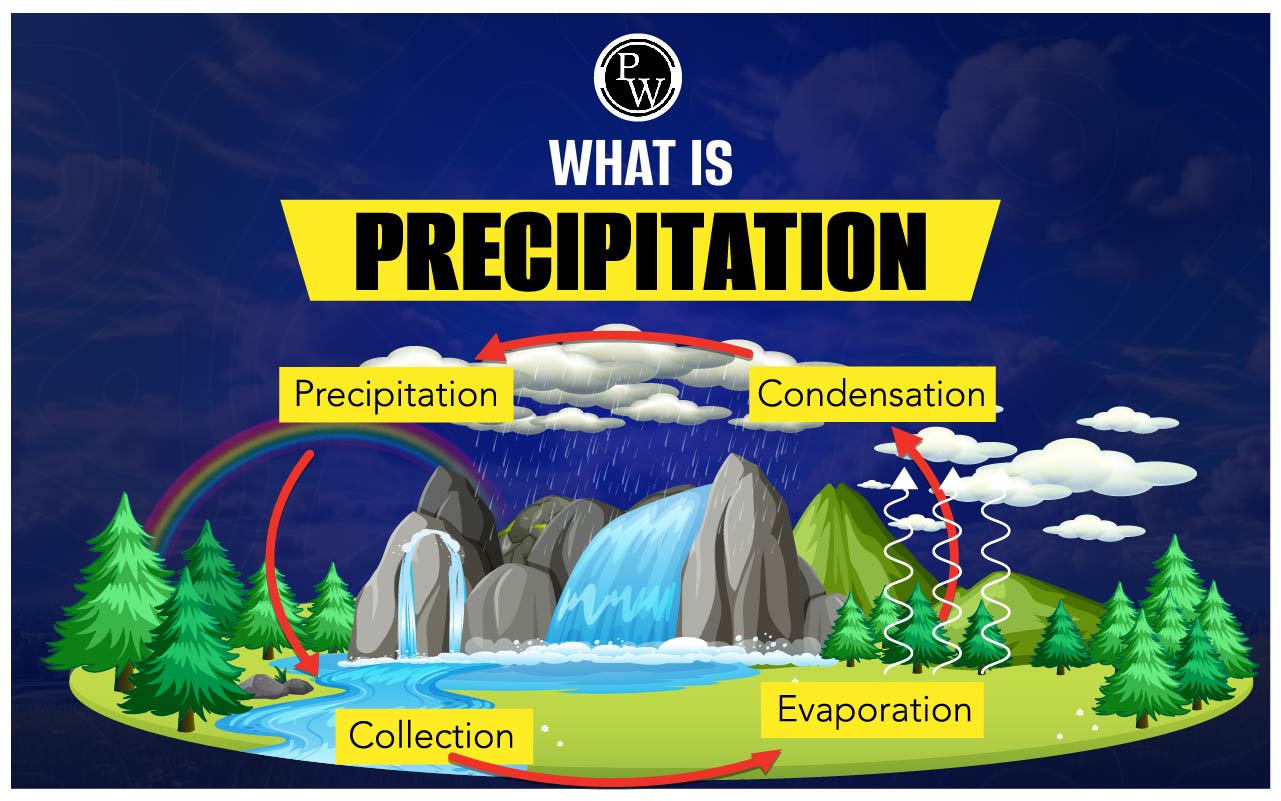

Have you ever wondered what is precipitation and why it plays such an important role in our environment? In simple terms, precipitation meaning refers to any form of water that falls from the atmosphere to the Earth’s surface. Understanding the precipitation definition and the precipitation process helps explain how rain, snow, hail, and sleet occur — forming a vital link in the Earth’s water cycle and shaping weather patterns across the globe.
Precipitation Meaning in Science and Geography
Precipitation in science refers to any form of water—liquid or solid—that falls from the atmosphere to the Earth’s surface. It is a vital component of the water cycle, replenishing freshwater sources and maintaining life on our planet.
In geography, the precipitation definition is slightly broader. It includes all atmospheric processes that cause water vapor to condense and fall under gravity. Thus, precipitation meaning in geography connects directly to weather patterns, climate zones, and hydrological balance.
In simple terms, precipitation meaning in science = condensation + gravity = rainfall or other forms of water reaching the ground.Process of Precipitation Explained
The process of precipitation begins with the evaporation of water from oceans, lakes, and rivers. This vapor rises and cools in the atmosphere, forming clouds. As more moisture gathers, condensation nuclei (like dust or pollen) help tiny droplets combine into larger ones.
When these droplets become too heavy, gravity pulls them down, resulting in rainfall or other forms of precipitation.
In short, to explain the process of precipitation:
-
Evaporation – Water vapor enters the air.
-
Condensation – Clouds form from cooling vapor.
-
Coalescence – Droplets merge and grow.
-
Precipitation – Water falls as rain, snow, hail, or sleet.
Thus, the precipitation process completes one key stage of the Earth’s water cycle.
Types of Precipitation (With Examples)
Precipitation occurs in several forms, depending on atmospheric temperature and conditions. The types of precipitation are mainly divided into liquid and solid forms.
Liquid Forms of Precipitation
-
Rain: The most common precipitation in liquid form, caused when water droplets grow large enough to fall without freezing.
-
Drizzle: Tiny droplets that fall slowly and cover small areas, often from low stratus clouds.
Both these forms of precipitation play a vital role in maintaining soil moisture and supporting agriculture.
Solid Forms of Precipitation (Snow, Hail, Sleet)
-
Snow: Formed when vapor freezes directly into ice crystals due to sub-zero temperatures.
-
Hail: Hard, round pellets of ice formed in thunderclouds with strong updrafts.
-
Sleet: Tiny ice pellets formed when raindrops freeze before reaching the ground.
These are all precipitation in the form of ice, influencing local climate, crop yield, and weather hazards.
Classification of Precipitation
The classification of precipitation depends on its formation mechanism:
-
Cyclonic (Frontal) Precipitation: Occurs when warm and cold air masses meet. Common in temperate zones.
-
Convective Precipitation: Caused by intense heating of the Earth’s surface leading to rising air currents—typical in tropical regions.
-
Orographic (Relief) Precipitation: Happens when moist air rises over mountains and cools to form rain.
To define precipitation and give two forms:
Precipitation is the fall of water from clouds, and its two main forms are rain (liquid) and snow (solid).
Importance & Impact of Precipitation
Precipitation plays a crucial role in sustaining ecosystems, regulating weather, and supporting human life. It:
-
Recharges groundwater and rivers
-
Supports agriculture and vegetation growth
-
Influences climate zones and temperature patterns
-
Helps in energy generation through hydropower
When you describe precipitation, it’s more than just rain — it’s the foundation of the Earth’s water cycle and climate regulation.
Hence, when geographers discuss the types of precipitation, they emphasize its role in both environmental balance and human livelihood.
Also Check:
- JEE mains 2026 registration
- JEE Main 2026 Cutoff Prediction
- JEE Main Exam Pattern 2026
- JEE Main Eligibility Criteria 2026
- JEE Main Fees Structure 2026
What is Precipitation FAQs
What is Precipitation?
What are the different forms of precipitation?
What is the process of precipitation?
What are the 4 types of precipitation?
What factors affect precipitation?












